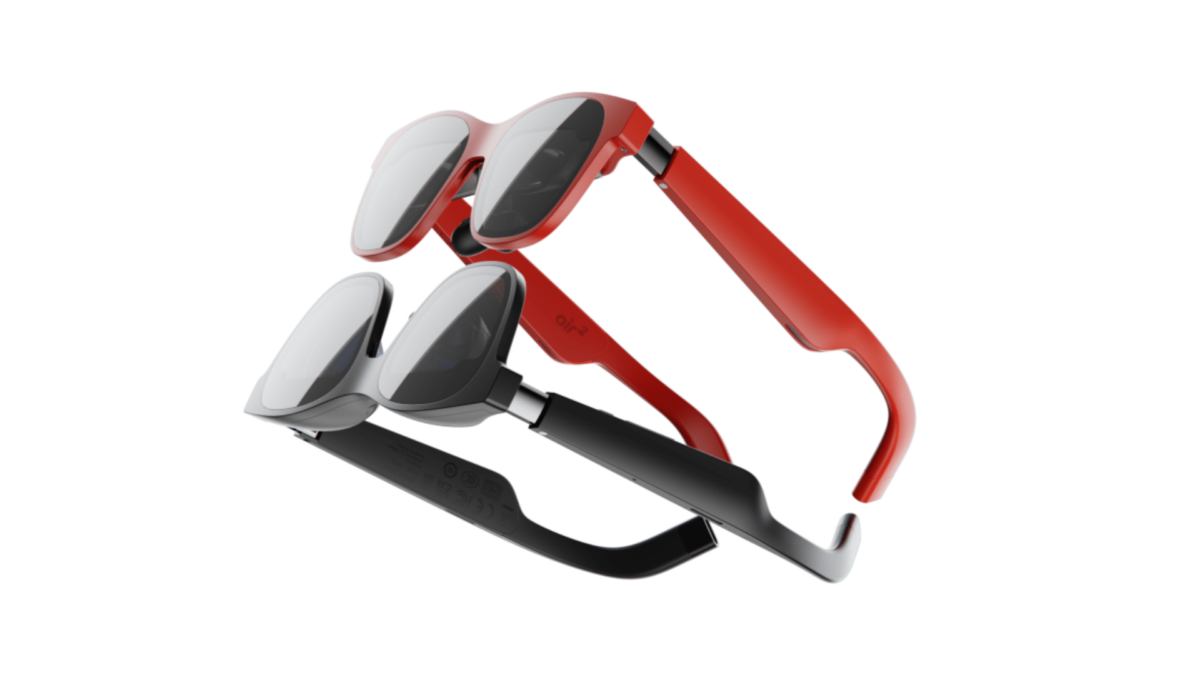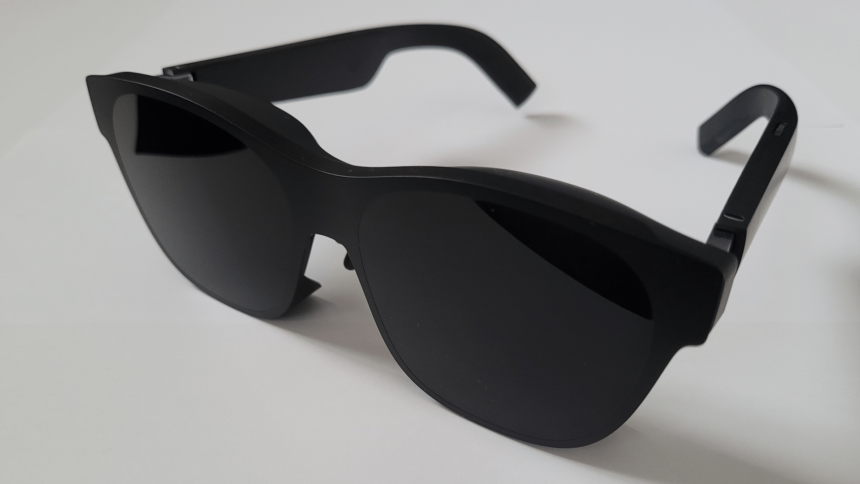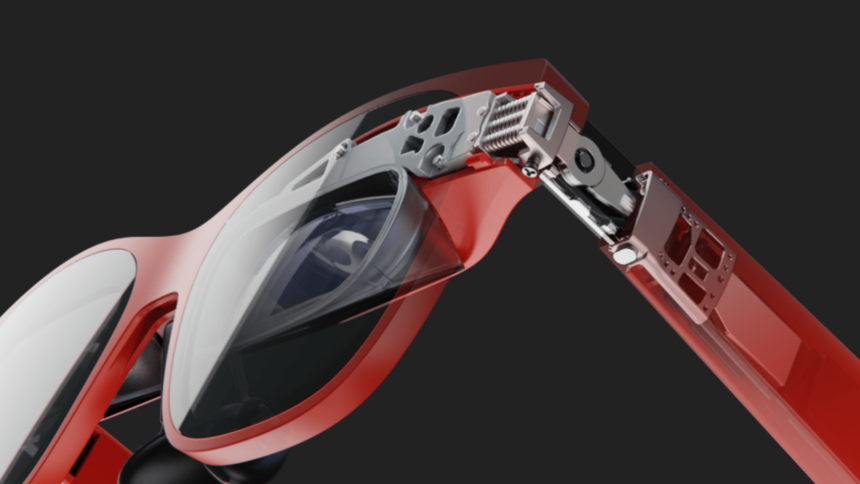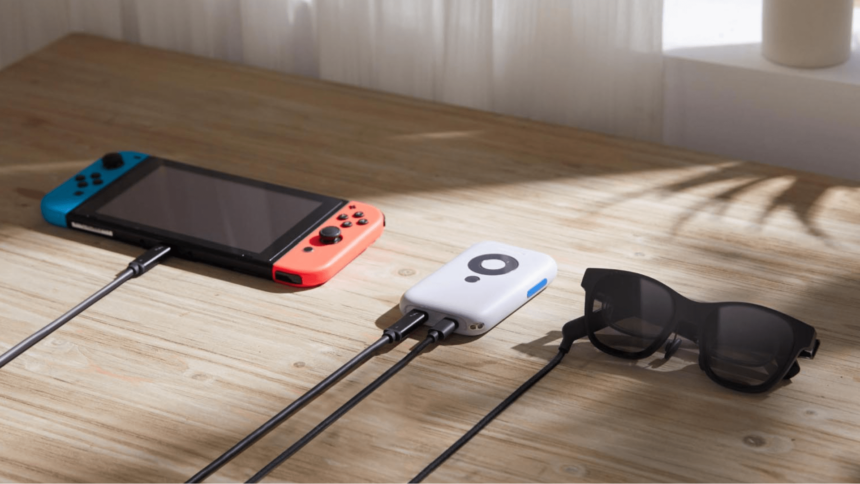Xreal Air 2 review: Great image with minor flaws

The Xreal Air 2 turns the compact displays of smartphones or game consoles into a giant virtual cinema screen. Find out how well it works in this review.
The Xreal Air 2 can display simple augmented reality applications. But its core feature is a virtual screen in the wearer's field of view that mirrors the display of a connected device. I tested the Xreal Air 2 with a smartphone, a laptop, and several game consoles. Read my review to find out how it performs and whether it's worth the hefty price tag.
Please Note: Everything you need to know about the technology, accessories and the various connectivity options can be found in our Xreal Air 2 info guide. This review is mainly about practice.
Content
Xreal Air 2: Test in a nutshell
The Xreal Air 2's MicroOLED displays are very bright, delivering rich colors and deep blacks. In good lighting conditions, the glasses deliver a great image. However, the narrow field of view and design-related fade-ins can be annoying.
The Xreal Air 2 only unfolds its full potential with the expensive Xreal Beam accessory, which offers a higher refresh rate, air casting and additional display modes. Beam is also required for connecting Xreal Air 2 to game consoles and many handhelds.
Those who travel a lot by train or work in hotels on business trips will find the Xreal Air 2 a handy accessory for enlarging smartphone or laptop screens. All in all, at $400 plus $119 for the Xreal Beam, it is clearly too expensive for an unreserved recommendation.
Xreal Air 2 is suitable for you if ...
- you like to spend a lot of money on new tech gadgets,
- you don't have room for big screens and
- you're often on the go and need a large screen to work.
Xreal Air 2 is less suitable for you if ...
- you are looking for a complete mixed reality experience,
- fade-ins or ghosting are a knock-out criterion for you and
- the screen size of your smartphone, handheld, or laptop is sufficient to you.
Xreal Air 2: Look and feel
Like its predecessor, which became known as the Steam Deck accessory, the Xreal Air 2 has a trendy wayfarer style. It is sturdy, has a very high-quality feel, and at first glance is almost indistinguishable from a regular pair of sunglasses. On closer inspection, you will notice the wider bridge and the inserts behind the lenses.
The latter, by the way, are barely tinted, so you can always see your surroundings clearly. With the included dimmer, a black plastic attachment that attaches to the front of the lenses, you can block out most of your surroundings, though not all of them.

With its fashionable Wayfarer design, the Xreal Air 2 looks like a normal pair of sunglasses at first glance.
On the underside of the right temple, there are inconspicuous buttons: one for standby mode and two for brightness control. Nine brightness levels up to 500 nits are available.
In addition, the temples can be adjusted up and down. This allows the headset to sit straight, even if your ears are not symmetrical, as mine are. Three easily replaceable nose pads in different sizes are included to ensure the Air 2 sits firmly on the nose.
Although the headset is heavier at the front due to the design, it sits stable and mostly comfortable with the matching nose pads. It withstands head shaking and nodding as well as movement in the car, bus, and train. I did have the problem, however, that the temple edges began to press against my ears after prolonged use.
Xreal Air 2: Display and image impression
Two 0.55-inch (1.4 cm) Sony MicroOLED displays are integrated into the nose bridge of the Xreal Air 2. Their image shines down and is directed by a beam splitter onto a curved mirror and from there into the field of view. As light also enters from outside, the impression of a virtual screen is created in the physical environment.

The Xreal Air 2's technology is built into the nose bridge and temples. | Image: Xreal
In standard mode, when connected to a display via a USB-C cable, the Xreal Air 2 achieves 60 or 72 Hz at Full-HD resolution, depending on the setting. In good lighting conditions, it delivers a stunningly beautiful picture with rich colors, deep blacks, and high brightness. The Air 2 is perfect for watching a Netflix movie on the couch in the evening while your partner blocks the Smart TV with their favorite show.
Office work can also be done well with the Xreal Air 2. The screen is sharp and text is easy to read. The huge virtual screen is a welcome extension of the small laptop or smartphone, especially on the road or in hotels – but there are drawbacks.
Small field of view, ghosting, and reflections
The Xreal Air 2 has a few small weak points that tarnish the overall impression a bit:
- Ghosting, a slightly blurred duplication of the bright area, occurs with high contrast, such as white text on a black background.
- The image emitted by the MicroOLEDs causes reflections at high brightness. These appear even when the room is completely dark and can be perceived as annoying.
- The Bird Bath Optics beam splitters (combiners) also reflect slightly at the edges, even in low light. This can also be distracting.
These criticisms are very subjective, as perception varies from person to person. For some people, reflections and ghosting are a no-no, while for others they are barely noticeable. In any case, I hardly found them annoying after a long period of use.
More problematic than the ghosting and reflections are the limited field of view and the slightly too small sweet spot. This is especially noticeable when you connect the Xreal Air 2 directly to a smartphone, notebook or other device with a USB-C output. The image always remains fixed and centered in your field of view and moves with your head movements (this problem can be solved with Xreal Beam, see next chapter).
For example, when writing in Microsoft Word, I have trouble reading the text in the upper corners of the menu bar. I can barely see the taskbar at the bottom. The image also becomes blurred at the sides.
Xreal Air 2 and its problem with sunlight
In general, the brighter the environment, the more transparent the image. Unfortunately, the MicroOLED's actually decent brightness is not enough to see anything in the midday sun on a summer day. Even with the dimmer turned on, the Xreal Air 2 reaches its limits in direct sunlight.
In the shade, in a moving car, train, or bus, the image is sufficient to write text, surf the web, watch a YouTube video, or maybe even play games. However, it becomes difficult to watch a dark science fiction movie, do image editing, or any other demanding screen work.
Xreal Beam: A hardly dispensable accessory
Pairing the Xreal Air 2 with the Xreal Beam, which costs just under $120, makes the AR headset much more flexible. The Beam offers three additional display modes: In "Smooth Follow", the image follows your head movements with a slight delay, but smoothly. "Side View" shrinks the image on demand and moves it to the side, so you can see more of your surroundings.
The most important setting, however, is "Body Anchor", which allows you to anchor the virtual screen in physical space. Just like a real screen, you can move your eyes around and focus on specific areas without the screen following you. This also makes the narrow field of view almost imperceptible. For me, Body Anchor is by far the most comfortable and enjoyable mode. It also allows you to adjust the size of the screen.
If you use Beam Air Cast, the Xreal Air 2 should also reach 120 Hz. However, I could not verify this in the test because I could not get a stable stream.
Xreal Air 2 as console accessory
Another advantage of Beam is that you can connect the Xreal Air 2 to gaming consoles like the Playstation 5, Xbox Series X or Nintendo Switch via the iPod-like adapter. For the test, I connected the Air 2 to an Xbox Series X and played Cyberpunk 2077 and Starfield for two hours.

To connect the Xreal Air 2 to gaming consoles like the Nintendo Switch, you'll need the Xreal Beam accessory (center). | Image: Xreal
The response time is not perfect, but both the shooter passages and other fast action sequences were pleasantly playable. However, I would not recommend playing competitive shooters or similar games, as even minimal latencies can cause problems in such genres.
For me personally, connecting it to the Nintendo Switch makes the most sense, as the Air 2's screen is a clear upgrade compared to the small LC display of the technically outdated handheld. Playing Super Mario Wonder on the huge virtual screen was a real pleasure.
Xreal Nebula: This is what the AR mode of the Air 2 can do
When you connect Xreal Air 2 to a smartphone, you have two options: Either mirror the smartphone's screen or install the Nebula AR app. Nebula gives you its own user interface, which looks like a giant curved screen that builds up around you. Your phone acts as a laser pointer, and you can select the app's tiles in front of you by tapping the screen.
In Nebula, you can check your calendar, answer emails, run various productivity apps, zoom in on photos and place them anywhere in the room, or just play games. However, the AR games available so far are nothing to write home about and are unlikely to entertain anyone for more than two minutes.
So far, I see little reason to use Nebula. Maybe this will change when Xreal releases the PC version. Then it should be possible to display your Windows desktop as a virtual multi-monitor setup in Xreal Air 2 and set up an immersive office.
Xreal Air 2: Verdict
The Xreal Air 2 delivers a crisp, clear image with rich colors and deep blacks, and is mostly comfortable to wear for extended periods of time. However, optimal lighting conditions are a prerequisite. In the blazing midday sun, the image is unrecognizable. The narrow field of view and sometimes annoying reflections also have to be considered.
Xreal Air 2 is ideal for enlarging smartphone or small laptop screens. The virtual screen is great for working on your computer, streaming Netflix or watching YouTube videos. However, the full potential of the display glasses can only be realized with the expensive Beam accessory.
Beam enables 120 Hz, Air Casting, important screen modes like Body Anchor and the connection to game consoles. The Nintendo Switch in particular benefits from the Air 2's enhanced image. Complex games on the Xbox Series X or Playstation 5 are indeed playable well. However, I would not want to swap my OLED TV for the Air 2 in the long run.
You can buy Xreal Air 2 here
Note: Links to online stores in articles can be so-called affiliate links. If you buy through this link, MIXED receives a commission from the provider. For you the price does not change.